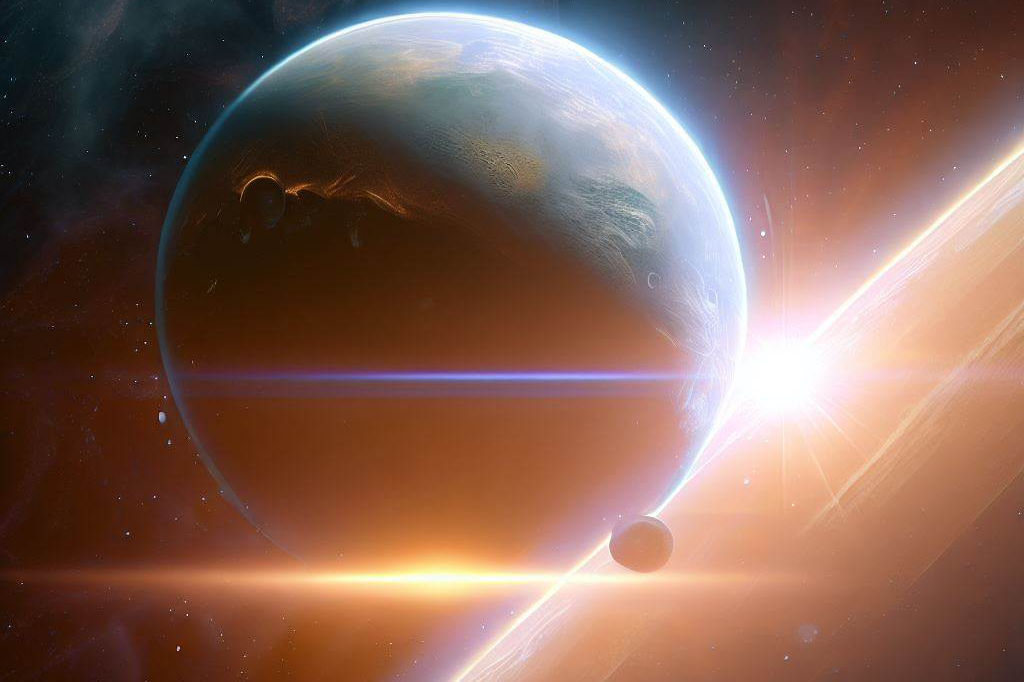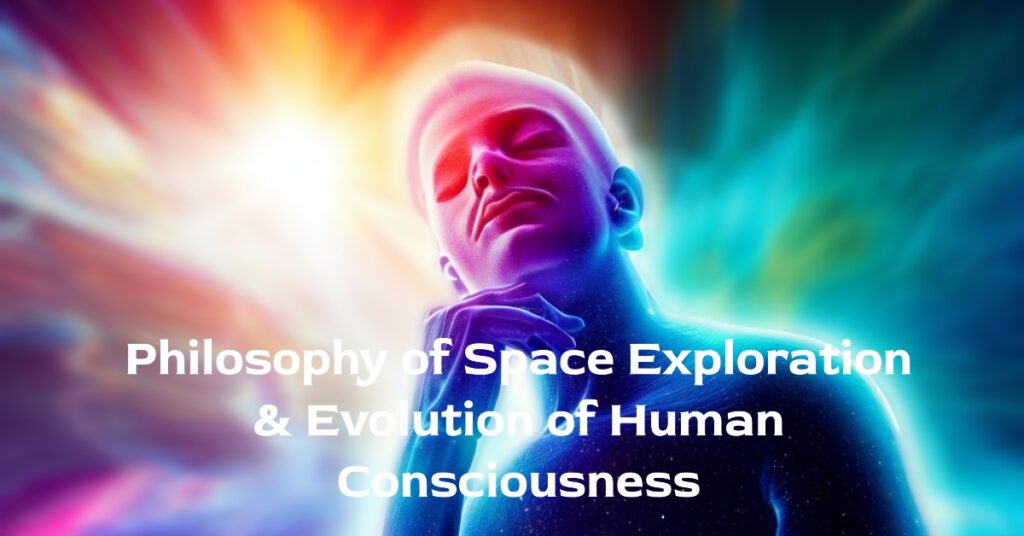Life, a mesmerizing and enigmatic phenomenon, dwells within the intricate fabric of our existence. It permeates every corner of our planet, from the depths of the ocean to the highest mountaintops.
Yet, amidst this wondrous tapestry of life on Earth, one question lingers in the minds of curious beings: does life exist beyond our pale blue dot? This quest for knowledge has captivated scientists and dreamers alike, fueling a relentless fascination with the possibility of extraterrestrial life.
The Definition of Life as We Know It
To embark upon this quest for extraterrestrial life, we must first seek to define life itself. Life can be broadly understood as a self-sustaining, organized system capable of growth, reproduction, and adaptation.
However, when we speak of “life as we know it,” we refer specifically to carbon-based life forms that thrive in environments similar to Earth. On our planet, life arises from complex organic molecules that form intricate structures through chemical reactions fueled by energy sources such as sunlight or geothermal heat.
These organisms exhibit astonishing diversity and adaptability across various ecosystems. Understanding these fundamental characteristics is crucial in determining what conditions are necessary for other planets to support similar forms of life.
The Fascination with the Possibility of Extraterrestrial Life

The notion that we might not be alone in this vast universe has enthralled humanity since time immemorial. Ancient civilizations gazed up at the night sky with wonderment and imagined celestial beings populating distant realms.
Today, armed with advanced telescopes and space probes, modern science has brought us closer than ever before to answering this ancient question. The fascination with extraterrestrial life stems from a combination of scientific curiosity and existential pondering.
The discovery that life exists beyond Earth would revolutionize our understanding of the universe and challenge our place within it. Moreover, the prospect of encountering intelligent alien life raises profound philosophical and ethical questions about our own existence, purpose, and interconnectedness with the cosmos.
The Importance of Understanding the Necessary Conditions for Life-Supporting Planets
While the search for extraterrestrial life often captures the public’s imagination through science fiction, it also has significant scientific relevance. By identifying the necessary conditions for a planet to support life as we know it, scientists can refine their search parameters and focus their efforts on planetary systems with the greatest potential. Furthermore, comprehending these conditions allows us to appreciate the delicate balance required for life to flourish.
It highlights Earth’s unique qualities that have nurtured an astonishing array of organisms over billions of years. This knowledge encourages us to protect and preserve our own planet while inspiring innovative approaches to supporting a sustainable existence in inhospitable environments.
In this article, we delve into the intricacies of what makes a planet habitable for carbon-based life forms like ours. We explore concepts such as the habitable zone, essential ingredients like liquid water, and energy sources, and examine examples from within our own solar system and beyond.
The Goldilocks Zone: Habitable Zone for Life

One of the fundamental concepts in the search for habitable planets is the notion of the Goldilocks Zone, also referred to as the habitable zone. This zone represents a region around a star where conditions are just right for liquid water to exist on a planet’s surface, making it a potential abode for life as we know it.
The concept takes its name from the classic fairy tale where Goldilocks searches for porridge that is neither too hot nor too cold, but just right. The significance of the Goldilocks Zone cannot be overstated.
Water, being an essential ingredient for life as we know it, requires certain temperature conditions to remain in its liquid state. If a planet is located too close to its host star, water would evaporate and escape into space due to intense heat.
Conversely, if a planet is situated too far away, water would freeze solid. Therefore, finding planets within this habitable zone becomes crucial in our quest to understand potential life-supporting environments beyond Earth.
Factors determining a planet’s position in the habitable zone
A planet’s position within the habitable zone depends on several factors that interact in intricate ways:
Distance from its host star (not too hot, not too cold)
The distance between a planet and its host star plays a pivotal role in determining its temperature range and potential habitability. If a planet orbits very close to its star (too hot), any existing water will vaporize and make it inhospitable for life. On the other hand, if it orbits too far away (too cold), water will freeze and remain locked as ice indefinitely.
Stellar type and stability
The type and stability of the host star also influence a planet’s habitability. Stars come in various sizes and temperatures, ranging from massive, short-lived ones to smaller, more stable ones like our Sun.
Planets orbiting unstable or highly energetic stars may face extreme conditions that make life impossible. Therefore, the characteristics of the host star are crucial in determining if a planet can maintain a stable environment suitable for life.
Orbital characteristics (eccentricity, axial tilt)
Aside from distance and stellar factors, a planet’s own orbital characteristics also impact its habitability. Eccentricity refers to the ellipticity of an orbit around its star, with greater eccentricities resulting in more extreme temperature fluctuations across seasons or orbits.
Axial tilt determines the angle at which a planet tilts on its axis. This tilt affects seasonal variations and climate patterns on a planet’s surface.
Examples of planets within the habitable zone
In recent years, astronomers have discovered several exoplanets located within their respective star’s habitable zone:
- Kepler-452b: Often dubbed Earth’s “cousin,” it orbits a star similar to our Sun and resides within its habitable zone.
- Proxima Centauri b: The closest known exoplanet to Earth orbits Proxima Centauri—a red dwarf star—and is located within its habitable zone.
- TRAPPIST-1e: Part of the remarkable TRAPPIST-1 system consisting of seven Earth-sized exoplanets, TRAPPIST-1e falls within its host star’s habitable zone.
These examples highlight the diversity and potential prevalence of potentially habitable worlds throughout our galaxy.
By studying these factors and discovering such planets, we inch closer to understanding what makes a celestial body capable of supporting life similar to that on Earth. The search for more examples within the habitable zone continues, as we strive to unravel the mysteries of our place in the universe and explore the possibility of life beyond our own planet.
Essential Ingredients for Life on a Planet

Liquid Water: The Elixir of Life
Water is often referred to as the elixir of life, and for good reason. It plays a fundamental role in sustaining life as we know it.
Not only is water a universal solvent that allows for the dissolution of various essential substances, but it also acts as a medium for biochemical reactions vital for the functioning of living organisms. Without water, life as we understand it would simply be impossible.
The conditions required for liquid water to exist on a planet’s surface or subsurface are crucial in determining its potential to support life. Firstly, the planet must be within what scientists refer to as the habitable zone or “Goldilocks zone” around its host star.
This zone represents an optimal range of distances where temperatures are neither too hot nor too cold, allowing water to exist in its liquid state. Additionally, factors such as atmospheric pressure and composition influence whether water remains stable at the planetary surface or is lost through processes like evaporation or sublimation.
Energy Source: Nurturing Life’s Processes
Sunlight stands out as the primary energy source driving most biological processes on Earth. Through photosynthesis, plants and certain microorganisms capture solar energy and convert it into chemical energy that sustains life throughout various ecosystems.
Photosynthesis not only provides organisms with organic compounds but also produces oxygen—a gas critical for many forms of complex life. While sunlight is crucial on Earth, alternative energy sources could potentially nurture life’s processes on other planets.
Some extreme environments on Earth rely on geothermal energy from volcanic activity or chemical energy obtained from unique geological formations deep within the planet’s crust. These alternative sources demonstrate that, although sunlight plays a dominant role here, different mechanisms can support life by harnessing other forms of available energy.
Final Thoughts

In the search for planets capable of supporting life, liquid water and available energy sources are two essential ingredients to consider. The presence of liquid water is a crucial factor, as it provides the necessary medium for biochemical reactions and allows for the dissolution and transport of vital substances. However, the existence of liquid water depends on various conditions, such as planetary distance from the host star, atmospheric conditions, and geological factors.
Furthermore, while sunlight is the primary energy source on Earth, alternative energy sources like geothermal or chemical energy have shown their potential to sustain life in extreme environments. This emphasizes that life may adapt and thrive under diverse conditions beyond our current understanding.
As we explore exoplanets and expand our knowledge about habitable zones and potential energy sources in the universe, we gain a deeper appreciation for the complexity of life’s requirements. By broadening our understanding of what makes a planet suitable for life as we know it, we nurture hope that in this vast cosmos, other habitable worlds may exist—worlds where life flourishes in extraordinary ways yet remains connected by its shared reliance on water and energy.

C M, a seasoned editor, journalist, and consultant, is deeply fascinated by the convergence of technology, space, and the future of humanity.
With a particular interest in transhumanity, futurology, and the philosophical and ethical dimensions of these domains, C M serves as the lead contributor to SpaceSpotlight and TranscendSphere.
When not penning insightful articles on these rapidly evolving fields, C M indulges in their love for podcasts and books, proudly embracing their status as a ‘Happy Nerd Extraordinaire!’



